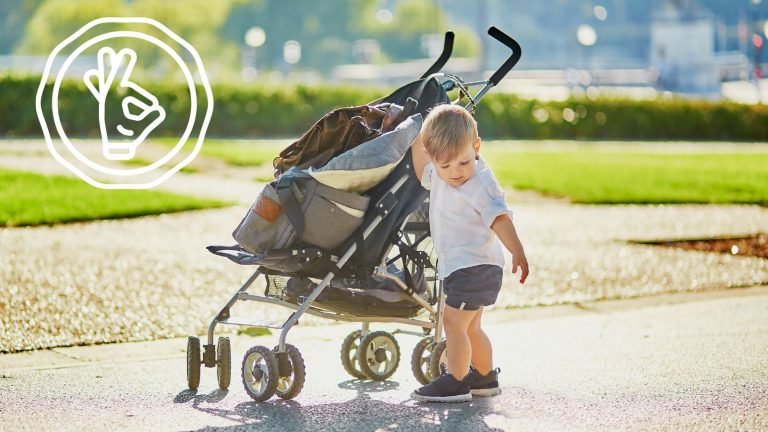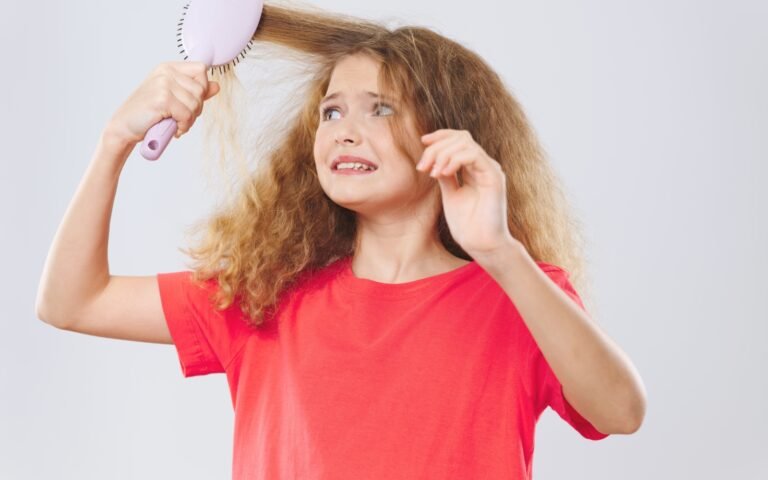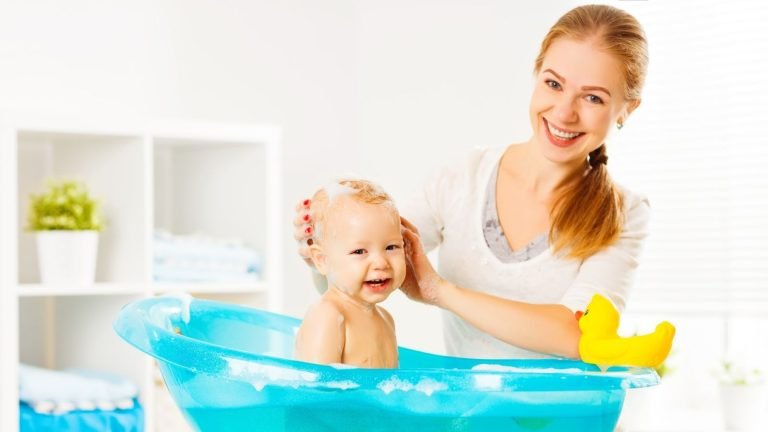How to use Humidifier for Baby: Easy Guide and Tips in 2024
Want to create a cozy and healthy space for your baby? A humidifier can be a great help, but it’s important to use it correctly.
In this post, we’ll share How to Use Humidifier for Baby to keep your little one comfortable and safe. We’ll cover everything from where to place it to how to maintain it.
By the end, you’ll know how to use a humidifier safely and effectively, ensuring your baby has the perfect sleeping environment.
Key Takeaway – How to use Humidifier for Baby
- Choose the right type: Cool mist humidifiers are safest for babies, avoiding hot steam risks.
- Proper placement: Position the humidifier at least 3 feet from the crib on a sturdy surface.
- Use distilled water: This prevents mineral buildup and reduces the risks of mold or bacteria.
- Regular cleaning: Empty the tank daily and clean weekly to maintain air quality and safety.
Choosing the Right Humidifier for Your Baby
Choosing the right humidifier for your baby is key to keeping the air comfortable and healthy. Babies benefit from humidifiers as they help combat dry air, which can easily irritate their soft skin and nasal passages.
Types of Humidifiers
- Cool Mist Humidifiers emit a gentle, cool mist to keep the nursery comfortable without the risks of hot steam, making them a popular choice for parents.
- Warm Mist Humidifiers: These provide heated mist, soothing during cold weather but requiring caution due to burn risks.
- Ultrasonic Humidifiers: Known for their quiet operation, they are ideal for use in your child’s room, ensuring undisturbed sleep.
Key Features to Consider
- Safety Features: Auto shut-off and cool mist options are important to avoid burns and secure humidifier safety for babies.
- Ease of Cleaning: Regular proper cleaning prevents mold and bacteria growth, ensuring the air in your baby’s room remains clean.
- Water Type: Use distilled water to minimize mineral deposits and reduce the chance of releasing harmful particles into the air.
Setting Up the Humidifier in the Baby’s Room
Proper placement of the humidifier is essential for your baby’s safety and comfort.
Optimal Placement in the Room
To keep your baby safe and comfortable, place the humidifier at least three feet away from the crib so your little one isn’t directly exposed to the mist.
A cool-mist humidifier is best, as it avoids the risks that come with hot steam. Make sure the humidifier is on a sturdy, out-of-reach surface to prevent any accidents.
Filling and Maintaining the Humidifier
Always use distilled water to prevent mold and bacteria growth, which can happen with tap water.
Regular cleaning is essential—empty the water tank daily and thoroughly clean the whole unit once a week using a mix of vinegar and water.
This routine helps keep bacteria, mold, and minerals from contaminating the air. By taking these steps, you can confirm your baby’s room stays both comfortable and safe.
Safety Tips When Using a Humidifier
Avoiding Over-Humidification
Using a humidifier in your baby’s room helps with dry air, but too much moisture can cause mold and bacteria growth. This can irritate your baby’s delicate throat and air passages.
To prevent this, use a hygrometer to keep humidity levels between 30-50%. Adjust your cool mist or warm mist humidifier as needed, especially during cold weather when indoor air is already dry.
Regular Cleaning and Maintenance
Proper cleaning of your humidifier is important to avoid bacteria, mold, and mineral buildup. For cool mist humidifiers, empty and rinse the tank daily, and clean weekly with a vinegar-water mixture.
Warm mist humidifiers should have the tank emptied and cleaned weekly, with boiling water if the manufacturer permits. Use only distilled water to prevent mineral deposits and bacterial growth. Avoid tap water.
Monitoring the Baby’s Comfort and Health
Observe your baby’s response to the humidified air. If you see improved sleep and less congestion, the humidifier is likely working well. If you notice coughing or other signs of irritation, check the humidity levels and consult your pediatrician for advice.
Common Mistakes to Avoid When Using a Humidifier in Your Baby’s Room
Using a humidifier can be beneficial for your baby’s room, but avoiding common mistakes is important for ensuring its effectiveness and safety.
Using Tap Water Instead of Distilled Water
Using tap water in your humidifier can lead to issues with mineral deposits and bacteria growth.
Tap water often contains minerals and chemicals that can create deposits inside the humidifier, leading to reduced efficiency and potential malfunctions.
Additionally, these deposits can become a breeding ground for mold and bacteria, which may spread into the air and irritate your baby’s delicate throat and air passages.
To avoid these problems, always use distilled water, which is free from impurities and safer for cool mist and warm mist humidifiers.
Neglecting Regular Maintenance
Neglecting regular maintenance of your humidifier can be a big mistake.
Without proper cleaning, both cool mist and warm mist humidifiers can become breeding grounds for mold and bacteria, which can then be released into the air and harm your baby’s health.
Regular cleaning is essential to prevent these risks and keep the humidifier running efficiently. If left uncleaned, humidifiers can also release harmful particles that might irritate your baby’s throat and respiratory system.
To keep your baby safe, always follow the manufacturer’s cleaning instructions and stick to a regular cleaning schedule.
By avoiding these mistakes and using the right practices, you can keep the air in your baby’s room comfortable and healthy.
When and How to Stop Using a Humidifier
Knowing when and how to stop operating a humidifier for your baby is important for maintaining a healthy environment. Here are some key points:
Signs It’s Time to Stop Using a Humidifier
1. Improved Air Quality
If the air quality in your baby’s room has improved and the dry air issue is resolved, you may no longer need a humidifier.
2. Seasonal Changes
As temperatures rise and indoor air becomes less dry, the need for a cool mist humidifier or warm mist humidifier may decrease.
3. Over-Humidification
Excess moisture can lead to mold and bacteria growth. If you notice condensation or a musty smell, it might be time to reduce or stop using the humidifier.
4. Baby’s Comfort
Monitor your baby’s reaction to the humidified air. If there are signs of discomfort or health issues, consult your pediatrician.
Seasonal Considerations and Phasing Out Use
1. Seasonal Adjustments
In colder months, a humidifier helps with dry air, but as it warms up, you might need to reduce usage.
2. Gradual Reduction
Gradually decrease the use of the humidifier rather than stopping abruptly.
3. Pediatrician’s Advice
Always consult your pediatrician if you’re unsure about stopping the humidifier.
Summary
A humidifier in your baby’s room can improve comfort, especially in dry weather.
Opt for a cool mist humidifier, placed three feet from the crib. Use distilled water to prevent buildup and mold, and clean the unit daily with a deep clean weekly.
Aim for 30-50% humidity. By maintaining cleanliness and monitoring humidity, you create a healthier sleeping environment. Always consult your pediatrician for tailored advice.
Frequently Asked Questions.
How to Use a Humidifier in a Baby’s Room?
Use a cool mist or warm mist humidifier with distilled water to keep the air moist and clean. Regular cleaning helps prevent mold and bacteria growth.
Should a Humidifier Run All Night for a Baby?
Running a humidifier all night is safe and helps with dry air. Just confirm it has safety features and check humidity levels to avoid over-humidification.
Where Is the Best Place to Put a Humidifier in a Baby’s Room?
Place the humidifier three feet away from the crib, on a sturdy surface. Keep warm mist humidifiers out of reach to avoid hot steam risks.
Is It Safe to Have a Humidifier in the Bedroom with a Baby?
Yes, it’s safe if you use a cool mist model, clean it regularly, and use distilled water. Keep warm mist humidifiers out of reach to prevent burns.





